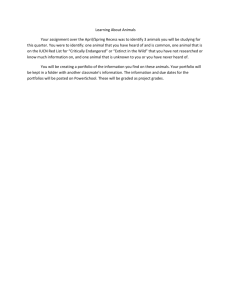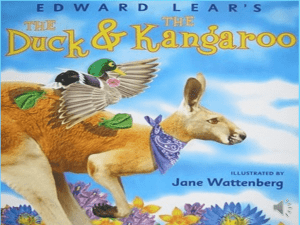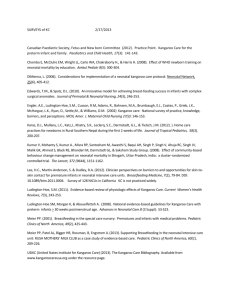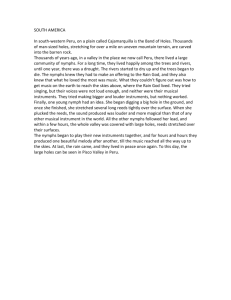Red Kangaroo Dreaming
advertisement
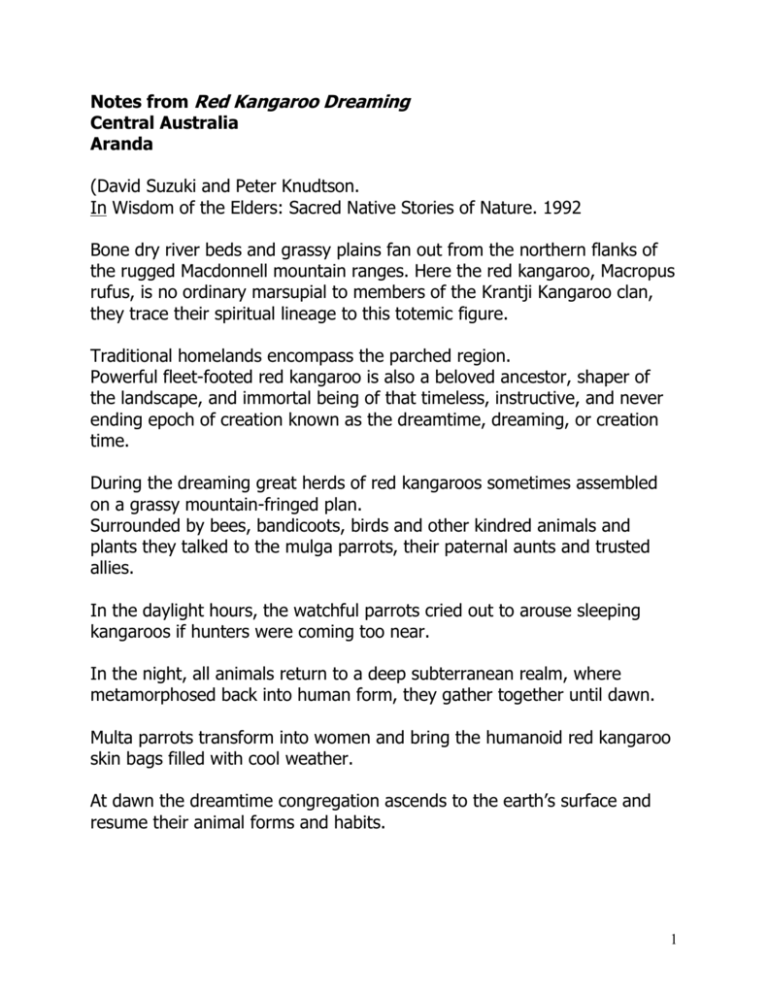
Notes from Red Kangaroo Dreaming Central Australia Aranda (David Suzuki and Peter Knudtson. In Wisdom of the Elders: Sacred Native Stories of Nature. 1992 Bone dry river beds and grassy plains fan out from the northern flanks of the rugged Macdonnell mountain ranges. Here the red kangaroo, Macropus rufus, is no ordinary marsupial to members of the Krantji Kangaroo clan, they trace their spiritual lineage to this totemic figure. Traditional homelands encompass the parched region. Powerful fleet-footed red kangaroo is also a beloved ancestor, shaper of the landscape, and immortal being of that timeless, instructive, and never ending epoch of creation known as the dreamtime, dreaming, or creation time. During the dreaming great herds of red kangaroos sometimes assembled on a grassy mountain-fringed plan. Surrounded by bees, bandicoots, birds and other kindred animals and plants they talked to the mulga parrots, their paternal aunts and trusted allies. In the daylight hours, the watchful parrots cried out to arouse sleeping kangaroos if hunters were coming too near. In the night, all animals return to a deep subterranean realm, where metamorphosed back into human form, they gather together until dawn. Multa parrots transform into women and bring the humanoid red kangaroo skin bags filled with cool weather. At dawn the dreamtime congregation ascends to the earth’s surface and resume their animal forms and habits. 1 Today there is no place more sacred to the red kangaroo clan than a single, small natural spring known as Krantji. It is the everlasting home of their original ancestor the leader of their red kangaroo clan. Out of the cool depths of the spring’s perennial waters the leader Krantijirinja sprang – who was a true kangaroo. He was clearly no ordinary kangaroo. He grazed in the day on lush green herbs and grasses around the sacred spring. When the sun set he took on his human form. He decorated his body with bold white geometric patterns. He danced until dawn. The spring is sacred because it is the aperture through which the red kangaroo chief made his first appearance on earth after the awakening of the ancestors from their eternal sleep underneath the sheltering crust. It is also sacred because Krantjirinja’s presence continues to animate this place, pulsate from it, in ways that challenge the human imagination and permeate the natural world. Creative life rejuvenating powers. Beneath the spring waters are the ancient sunken shield and several sacred stone slabs. It is the duty of each generation of red kangaroo clan to honor and care for these stones. They are remnants of the living tissue of Krantjirinja, their common ancestor. These stones are visible embodiments of some part of the fertility of the great ancestor. Reservoirs of reproductive energy from which all kangaroo ancestors arise in batches. Emerging first as kangaroos and then assuming human bodies. The red kangaroo chief is the living essence of the dreamtime unity of the two species. This ancestor is the ancestor of all living human beings in his totem clan and of all living animals of his kind. Human and animal are bound together by common descent, mutual concern, and shared destiny. During the course of a particular ancestor’s heroic land sculpting journey on under or above the earth’s virginal creation time surface, the ancestor left in its wake a sacred, eternal, living spoor. Rock formations, trees, 2 water holes, and other features that dot the local terrain maker ancestral dreamtime passages, record their dramas, and entomb many of its principal characters, as if in slumber. These sacred places are centers of nature’s reproductive powers. The vitality of the red kangaroo ancestor inhabiting krantji spring is at once spiritual and ecological. - his story is a reflection of the Aranda peoples’ dreamtime origins and religious duties - his story is a reflection of the primal, cyclic, life perpetuating process of the natural world - he embodies the essence of nature’s life force and fertility and primordial, pervasive, and perplexing life stuff that animates all living things their knowledge that the local terrain is a sacred map of their animal ancestor’s journeys gives members of the red kangaroo clan a sense of participation in the workings of local ecosystems. - if local big game populations dwindle, Aranda hunters can communicate through ritual and prayer with the forces of nature that have placed their existence in peril - along the dreamtime trails of the clan animal ancestor are indelible geographic points where human beings can communicate with the sum total of living human and animal fertility This understanding of the creation time connects between the topography of the land and nature’s regenerative powers which allow the hunter to work in harmony with the forces of fertility. The ancestors left a trail of words and musical notes and physical footprints, permanently etching their stories in the earth. By singing the appropriate sacred songs, a totemic clansman could reliably navigate for days along these dreamtime tracks. In the process the land would be rejuvenated, memories of totemic ancestors would be ritually rekindled, and reunions with faraway kinsmen would take place along the ancient dreamtime spoor of stone, story and song. 3 In theory the whole of Australia could be read as a musical score. The song lines are episodes that are readable in terms of geology. In Dec. 1980 A.E. Newsome, a wildlife biologist and authority on natural history and ecology of the red kangaroo, published an article that suggested that Aranda Red Kangaroo stories harbor considerably more scientific meaning than skeptics had imagined. “The ecological mythology of the red kangaroo in central Australia” published in Mankind. He reported a congruence of myth and reality. The stories about Red Kangaroo Dreaming and the sacred spring at Krintji have an underlying ecological rationale. Newsome pieced together segments of the meandering dreaming trails evoked in certain red kangaroo stories. He matched sacred aranda sites mentioned in accounts of the mythological journeys of the ancestors with actual physical locations. The site of the spring, for example was a place that the aranda approached in silence and reverence, eyes closed, fingers feeling their way among the rock. They had already laid down their weapons some ways off to show peaceful intent. They offered a friendly signal to ancestors and kangaroos. There was no hunting near ceremonial sites. Kangaroos were sacred and protected at these sites. They red kangaroo clan performed their primary task of striking sacred rocks and trees knowing that every grain dislodged arose as a kangaroo when next it rained. They sang to Krantji. Red kangaroos are herbivores and nomadic, moving with seasons. Kangaroos depend on the green plants that flourish along the moist shady drainages of rivers and creeks. They rely on a grass called never fail because of its hardiness in drought. 4 The kangaroo’s range follows the patterns of high soil moisture created as waters drain the lower slopes and plains. In dry spells the animals congregate near river beds and plains where the grasses still thrive. In the aboriginal tales of the dreamtime travels of kangaroo ancestors during creation time, Newsome discovered a sophisticated grasp of red kangaroo ecology. A map of the ancestors’ overland trek near Krantji, breathing life and form into the landscape as they went, corresponded with uncanny precision to maps of the preferred habitats of red kangaroo which Newsome had painstakingly assembled by scientific study. A map of the subterranean portions of the ancestors’ dreamtime journeys during which their radiant powers are diminished, corresponded with expanses of desert lands inhospitable to red kangaroo populations. “The ancient Aborigines who created these legends must have been well acquainted with the ecology of the red kangaroo, and appear to have passed that knowledge into the mythology to be hidden by allegory.” At the same time, these stories and beliefs about the sacred site called Krantji encode genuine ecological truths about population dynamics and dietary preferences of local red kangaroos. They also contain a moral code mandating irrevocable human responsibility to honor and nurture those precious life sustaining animal populations in perpetuity. A taboo against hunting red kangaroo in areas surrounding sacred clan totemic sites is a conservation tool. - these sacred sites are often located along the overland Dreaming trails of the ancestors, corresponding to prime red kangaroo habitat. A powerful environmental ethic that ensured that the red kangaroo were protected near their best habitat. 5 By paying homage to the original ancestor of the red kangaroo, Aranda hunters established spiritual and ecological reserves for this species. Over generations their sustained reverence was probably rewarded. Sacred songs, dances, and prayers performed in such sanctuaries sustained and even seemed to renew local kangaroo populations, just as if precious particles of dust from beloved sacred kangaroo sites like Krantji became a kangaroo when next it rained. This poignant marriage of spirit and ecology is inconceivable without a profound, enduring sensitivity to the real workings of the natural world over great expanses of time. Aranda thought and memory seem to have given birth to a land ethic in the truest, most holistic, sense of that term. Equipped humans with a profound emotional and ecological connection with the rest of creation and a responsibility to conserve forever the capacity of the land for self renewal. (David Suzuki and Peter Knudtson. In Wisdom of the Elders: Sacred Native Stories of Nature. 1992 6
